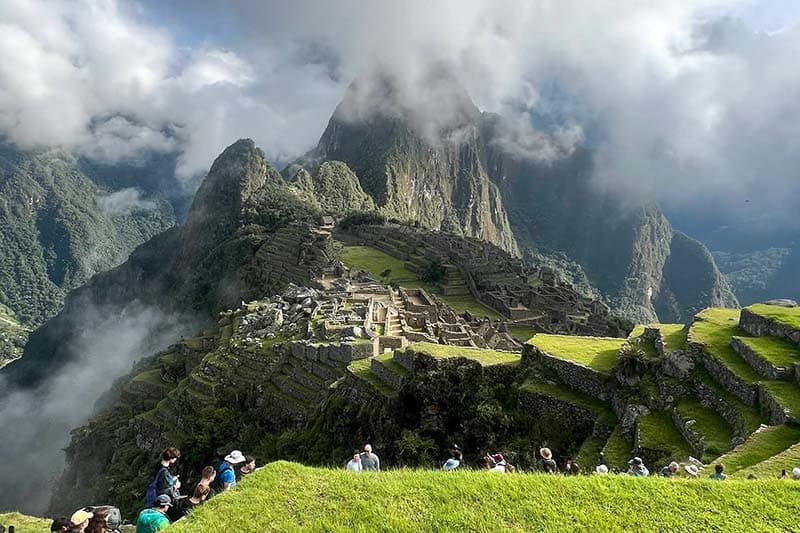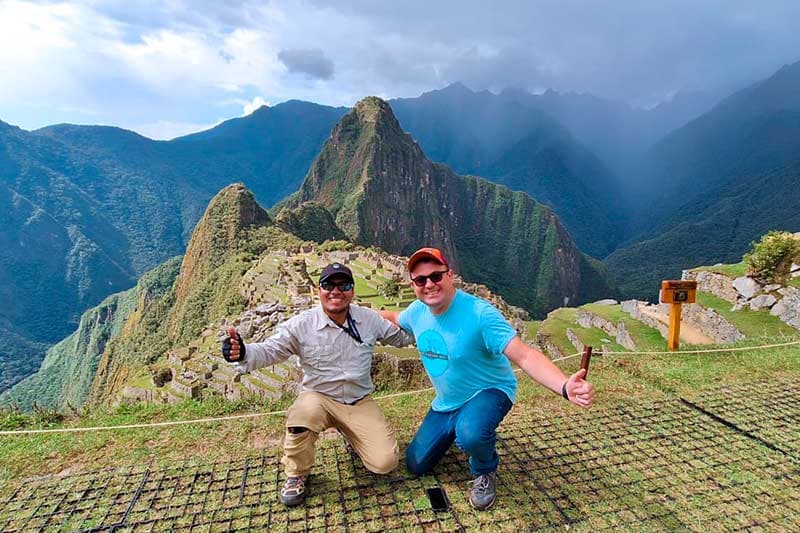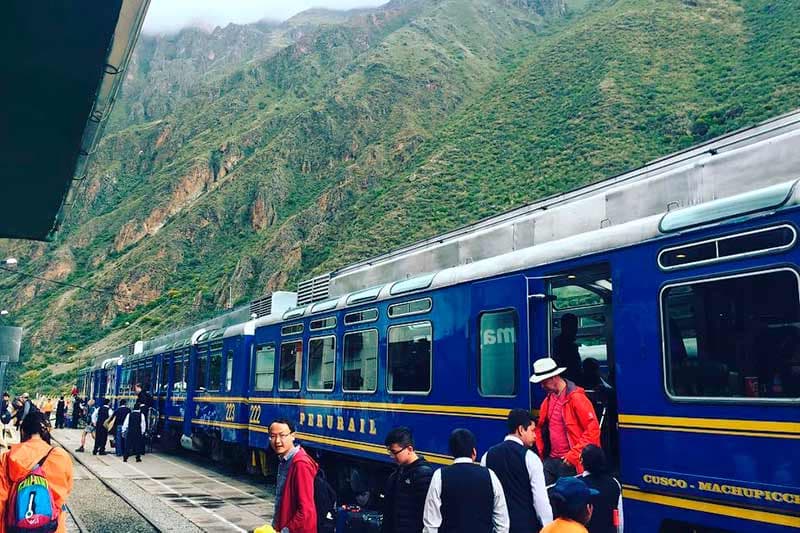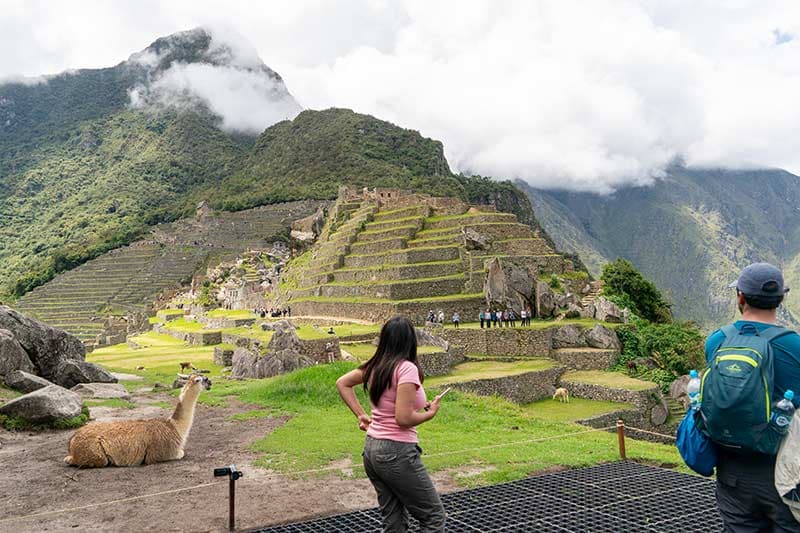Machu Picchu in 2025? Helpful tips that make a difference
Have you heard about Machu Picchu a thousand times but still don’t know what makes it so special? This city hidden among the mountains is not only famous for its ruins. There’s something in its silence, its history, and its views that leaves you speechless. In this blog, I’ll share what doesn’t show up in the photos and why it’s worth seeing with your own eyes.
- History and Significance of Machu Picchu
- Trip Planning
- Tickets and Access
- Transport and Access Routes
- Lodging and Services
- Preparations and Recommendations

History and Significance of Machu Picchu
What is Machu Picchu and why is it important?
Machu Picchu is an Inca city built in the 15th century, located high on a mountain in the Cusco region of Peru. It is believed to have been a religious, political, and administrative center, possibly used as the residence of the Inca Pachacutec. It consists of stone structures, agricultural terraces, temples, and enclosures that demonstrate the Incas’ advanced architectural knowledge and their ability to adapt to the natural environment.
Its importance lies in its historical and cultural value, as it represents one of the most outstanding achievements of the Inca civilization. Additionally, it is one of the most recognized tourist destinations in the world and a national symbol of Peru. It was declared a UNESCO World Heritage Site in 1983, and its preservation allows us to learn more about the Incas’ way of life, religion, and organization.
Who discovered Machu Picchu and when?
The rediscovery of Machu Picchu was made by the American explorer Hiram Bingham on July 24, 1911. Although local residents already knew about the ruins, Bingham was the one who brought them to the attention of the scientific and academic world with support from Yale University and the Peruvian government. He was guided by a local boy who led him along a vegetation-covered trail to the structures now known worldwide.
From that moment, a series of archaeological investigations and excavations began, which helped uncover the history and secrets of the site. The discovery attracted international attention and turned Machu Picchu into one of Latin America’s main archaeological points of interest. Although there are debates about whether others visited the site earlier, Bingham is credited with documenting and publicizing it.
Why is it called the “Lost City of the Incas”?
It is called the “Lost City of the Incas” because, after the Spanish conquest and the collapse of the Inca Empire, Machu Picchu was abandoned and not recorded by colonial chroniclers. Unlike other Inca cities like Cusco or the Sacred Valley, Machu Picchu remained hidden among the jungle and mountains for centuries, unnoticed by the outside world.
This invisibility gave it an air of mystery and the fame of having been “lost” for hundreds of years. Its rediscovery in the 20th century was surprising due to the well-preserved state of many of its structures and the way it seemed frozen in time. That combination of abandonment, mystery, and natural beauty contributed to earning it that nickname.
Is Machu Picchu one of the 7 wonders of the modern world?
Yes, Machu Picchu was chosen as one of the 7 wonders of the modern world on July 7, 2007. This selection was organized by the New7Wonders Foundation and was based on a global vote involving millions of people around the world. The choice recognized the site’s historical, architectural, and cultural significance.
Being part of the 7 modern wonders has strengthened Machu Picchu’s international recognition and increased tourist interest in visiting the site. Moreover, this distinction highlights the ingenuity of the Inca civilization and the way they managed to build a functional and harmonious city in such a challenging high-mountain environment.
Trip Planning
What is the best time to visit Machu Picchu?
The best time to visit the Inca citadel of Machu Picchu is during the dry season, which runs from April to September. During these months, weather conditions are quite stable with little to no rain.
However, during this period, tourist traffic increases significantly, as it coincides with vacation time in some European and American countries. This means entrance tickets—regardless of the route—sell out faster compared to other months.
How many days are recommended for the visit?
Traveler, this will depend on you. If your plan is to visit only Machu Picchu, you could make a fairly quick trip in just one day. However, since it’s quite a distance from Cusco, you’ll need to leave very early and may return quite late at night.
On the other hand, if you’re the kind of traveler who prefers a more relaxed experience without waking up at dawn, you could do the trip in two days, spending one night in the town of Aguas Calientes (Machu Picchu Pueblo). That way, you’ll be very close to Machu Picchu and can enjoy a comfortable night’s rest and a relaxed breakfast.
Finally, traveler, if you want to hike a trekking route and reach Machu Picchu on foot, it’s important to plan for at least five days so time is on your side. And don’t forget the logistical support of a travel agency—you won’t want to carry too much weight in your backpack, right?
Is it necessary to hire a travel agency or can you go on your own?
Take note! To enter the Machu Picchu citadel, it is not mandatory to have a tour guide or travel agency. However, if you choose to go on your own, you must be very careful to book all necessary services in advance, such as transportation and entrance tickets. All logistics will fall on you, and forgetting even one detail could cause unwanted complications.
For this reason, most travelers choose to hire a travel agency that provides everything needed for the visit to Machu Picchu, avoiding worries about potential planning errors. In addition, agencies usually include a guide service, which is highly recommended. Why? Because this citadel is full of stories and mysteries in every street and temple that you won’t want to miss.
How does the altitude affect you and how can altitude sickness be prevented?
One very important detail to keep in mind is that most travelers arrive first in the city of Cusco, which is at 3,399 meters (11,152 ft) above sea level. It is usually recommended to stay there for 1 to 2 days to acclimate and allow your body to adjust to the altitude and climate, in order to prevent or reduce symptoms of altitude sickness.
If you do this prior acclimatization, it is unlikely that you will experience symptoms of altitude sickness. Why? Because Machu Picchu is located at 2,430 meters (7,972 ft) above sea level—much lower than Cusco—so your body won’t feel a sudden change, and the air will be lighter.

If you experience symptoms of altitude sickness and they worsen despite taking medication or natural remedies, it is very important to seek medical attention to prevent your condition from getting worse.
Tickets and Access
Where and how to buy tickets to Machu Picchu?
This is a simple topic, so no need to overcomplicate it. There are three ways to purchase your Machu Picchu ticket:
- Online: You can do it through our website imachuticket.com or on the official Ministry of Culture website: tuboleto.cultura.pe. Both platforms let you check real-time availability and purchase your ticket directly.
- In person: You can only buy tickets in person in the city of Cusco, at Garcilaso Street 225. However, this is not highly recommended, as tickets often need to be purchased several months in advance—something not feasible for most travelers coming from other cities or countries.
Now, let’s look at how to buy tickets online, which is the most practical and widely used option by both travel agencies and independent tourists:
- Step one: Visit one of the websites mentioned. Have your ID or passport ready, as you’ll need it to complete the forms.
- Step two: Choose the circuit and route you want to take. Then select your entry date and time.
- Step three: Indicate how many people will be traveling with you. Important: each ticket is personal, so you’ll need to buy one per traveler.
- Step four: Fill out the form with your personal information. Make sure all details are correct before confirming your booking.
- Step five: Make the payment and complete your reservation. Your ticket will be sent to your email, or you can download it directly from the platform.
How far in advance should tickets be purchased?
Traveler, it’s important to know that the number of entry tickets to Machu Picchu is limited and demand is very high. Therefore, they often sell out quickly. The recommended timeframe is to book at least 3 to 4 months in advance of your travel date.
Heads up! For your trip, the most important thing—and your first mission—should be securing your entry ticket to Machu Picchu. If you don’t have it, you won’t be allowed to enter, even if your transportation, guide, or other services are ready. Better to be cautious and ensure a smooth experience.
What types of tickets are available?
Circuit Route Circuit 1 Route 1-A: Machu Picchu Mountain Route Route 1-B: Upper Terrace Route Route 1-C: Intipunku Gate Route (available only in high season) Route 1-D: Inka Bridge Route (available only in high season) Circuit 2 Route 2-A: Designed Classic Route Route 2-B: Lower Terrace Route Circuit 3 Route 3-A: Waynapicchu Mountain Route Route 3-B: Designed Royalty Route Route 3-C: Great Cavern Route (available only in high season) Route 3-D: Huchuypicchu Route (available only in high season) Is it mandatory to hire a guide to enter?
It is not mandatory to have a tour guide to enter the Machu Picchu citadel. However, keep in mind that this place is full of history and mysteries in every street and temple—you won’t want to miss them.
One of the best ways to get the most out of your visit is with a tour guide who can provide all the information you need, making your tour more interesting and enriching. Heads up! There are certain places with a special energy that only a guide will know how to help you feel. You wouldn’t want to miss that experience, right?
What are the entry times and how long can you stay at the site?
Route Entry Time Route 1-A: Machu Picchu Mountain Route 6:00 am and 8:00 am Route 1-B: Upper Terrace Route 6:00 am, 7:00 am, 8:00 am, 9:00 am, 10:00 am, 11:00 am, 12:00 pm, 1:00 pm, 2:00 pm and 3:00 pm Route 1-C: Intipunku Gate Route (only available in high season) 8:00 am, 9:00 am, 10:00 am, 11:00 am Route 1-D: Inka Bridge Route (only available in high season) 8:00 am, 9:00 am, 10:00 am, 11:00 am Route 2-A: Designed Classic Route 6:00 am, 7:00 am, 8:00 am, 9:00 am, 10:00 am, 11:00 am, 12:00 pm, 1:00 pm, 2:00 pm and 3:00 pm Route 2-B: Lower Terrace Route 6:00 am, 7:00 am, 8:00 am, 9:00 am, 10:00 am, 11:00 am, 12:00 pm, 1:00 pm, 2:00 pm and 3:00 pm Route 3-A: Waynapicchu Mountain Route 7:00 am and 9:00 am Route 3-B: Designed Royalty Route 6:00 am, 7:00 am, 8:00 am, 9:00 am, 10:00 am, 11:00 am, 12:00 pm, 1:00 pm, 2:00 pm and 3:00 pm Route 3-C: Great Cavern Route (only available in high season) 7:00 am and 8:00 am Route 3-D: Huchuypicchu Route (only available in high season) 9:00 am and 11:00 am
Transportation and Access Routes
How to get to Machu Picchu from Cusco?
Let’s make it practical. First, you should know that there are three ways to get to the Machu Picchu citadel, all of which depart from the city of Cusco. Each option offers a different experience, which may help you make a better decision depending on your interests.
- First option: This is one of the most popular options. It involves taking a bus from Cusco to Ollantaytambo, then a train from Ollantaytambo to Aguas Calientes, and finally taking a bus from Aguas Calientes to the Machu Picchu citadel.
- Second option: This is the longest route. The journey begins with approximately 6 hours by car or bus from Cusco to Hidroeléctrica. From there, you will need to walk for about 2 hours to reach Aguas Calientes. Once in the town, you can choose to take the bus to Machu Picchu or walk another 2 hours. This option is usually done over 2 days.
- Third option: Designed for the more adventurous. This route involves reaching Machu Picchu through trekking routes like the Inca Trail. For this alternative, you will need at least 4 days of walking, with the citadel as the final reward for your effort.
What is the Inca Trail and how can it be traveled?
The Inca Trail is one of the most famous trekking routes in the world, as it crosses the Historic Sanctuary of Machu Picchu and ends at the citadel itself. It has a distance of approximately 43 kilometers, which takes about 4 days to complete.
If you wish to do this route, it is mandatory to hire an authorized travel agency. Without one, you will not be allowed entry. Additionally, it is a good option because the agency will take care of everything necessary: permits, luggage transport, food, camping equipment, guides, and more.
What is the alternative route via Hidroeléctrica?
This is one of the ways to reach Machu Picchu. It is considered the longest due to the travel time by car or bus from the city of Cusco, which takes approximately 6 hours. After that, you will begin a 2-hour walk to the town of Aguas Calientes (Machu Picchu Pueblo).
One thing you should know is that this route is typically done over two days, so you will need to spend the night in Aguas Calientes. The next day, you can visit the Machu Picchu citadel. Before ascending, you can choose whether to take the bus (30 minutes) or continue walking, which will take about 2 more hours.
If you wish to undertake this trekking route, it is very important to make your reservation at least 5 to 6 months in advance. Why? This route has only 500 daily entries, 300 of which are for travel agency personnel and only 200 for tourists. Watch out for that!

Accommodation and Services
Where to stay: Cusco, Ollantaytambo, or Aguas Calientes?
First, you should know that the first place you will arrive at is the city of Cusco. Additionally, keep in mind that most tourist operations start from the historic center of this city, so staying there will be very important.
If you’re planning to visit Machu Picchu on a two-day trip, you can choose to stay at one of the hotels in the town of Aguas Calientes. Note! It’s very important to make a reservation in advance, as if you don’t, you might have trouble finding an available room.
What services are available in Aguas Calientes?
Although it’s a very small town, where you can walk from one end to the other in just a few minutes, Aguas Calientes offers a wide variety of services such as restaurants, bars, nightclubs, cafés, shops, and hotels. It’s a place that has everything you need so you won’t miss anything during your visit to Machu Picchu.
Do I need to book some of these in advance? Luckily, it’s not necessary to make reservations to enter most of these places; you can enter and consume freely. However, some 3- to 5-star hotels may require prior booking, especially during the high season.
Are there bathrooms inside Machu Picchu?
Note this! Inside the Machu Picchu citadel, you won’t find any restroom facilities. Don’t worry! We know that sometimes an inconvenience or emergency may arise, and for that, you can find restroom facilities near the entrance of the citadel, where it will be your last opportunity to access this service.
On the other hand, traveler, keep in mind that in the town of Aguas Calientes, you can also access this service at the hotel where you’re staying, at the restaurant, at the bus terminal, or any other establishment.

Preparations and Recommendations
What to bring in your backpack for the visit?
During your visit, it’s important to carry only what is necessary. Some recommended items are sunscreen, sunglasses, a cap or hat, snacks, and water. That should be more than enough for your backpack.
Is that all? Yes, that’s all. As travelers, one of our first rules is to travel light, with only what is necessary. Carrying too many things can be uncomfortable because of the weight, and most likely, you won’t use much of what you bring. So, be mindful of that!
What type of clothing and footwear are suitable?
During your tour, you shouldn’t forget to wear clothing that allows you to move easily, that doesn’t restrict your steps, and most importantly, that protects you from the sun’s rays if the day becomes very sunny. In case of rain, you should have waterproof clothing or rain ponchos handy. With that, you’ll be more than ready.
Now, regarding footwear, an important detail to keep in mind is that you’ll constantly be walking on cobbled paths, so having the right shoes will make a big difference. It’s recommended to wear trekking shoes or similar footwear that have the necessary technology to protect your feet and provide stability and traction while walking.
Is the use of cameras, drones, or selfie sticks allowed?
Note this! One very important thing to keep in mind is that you can bring your camera, but don’t bring too much equipment, as photography or video for commercial or cinematic purposes is not allowed.
Regarding drones, they are completely prohibited. If you decide to bring one, you’ll be asked to leave it at the control point, and you won’t be allowed to bring it into the site.
We know that photographs are one of the best ways to remember our adventures, so we recommend you take the opportunity to take pictures at every spot you can. There are incredible spots in the Machu Picchu citadel that don’t often appear on social media, so make the most of them!
Traveler, despite the ideas you may have, it’s very important to avoid wearing urban or formal clothing, as it will restrict your movement, making your steps shorter and more uncomfortable. Also, if you wear urban or formal footwear, you could suffer from friction injuries or even falls.


